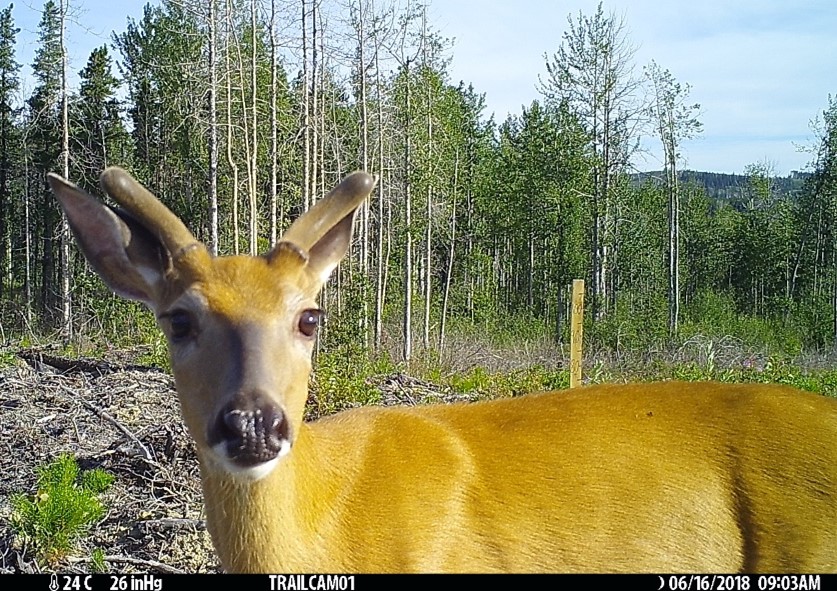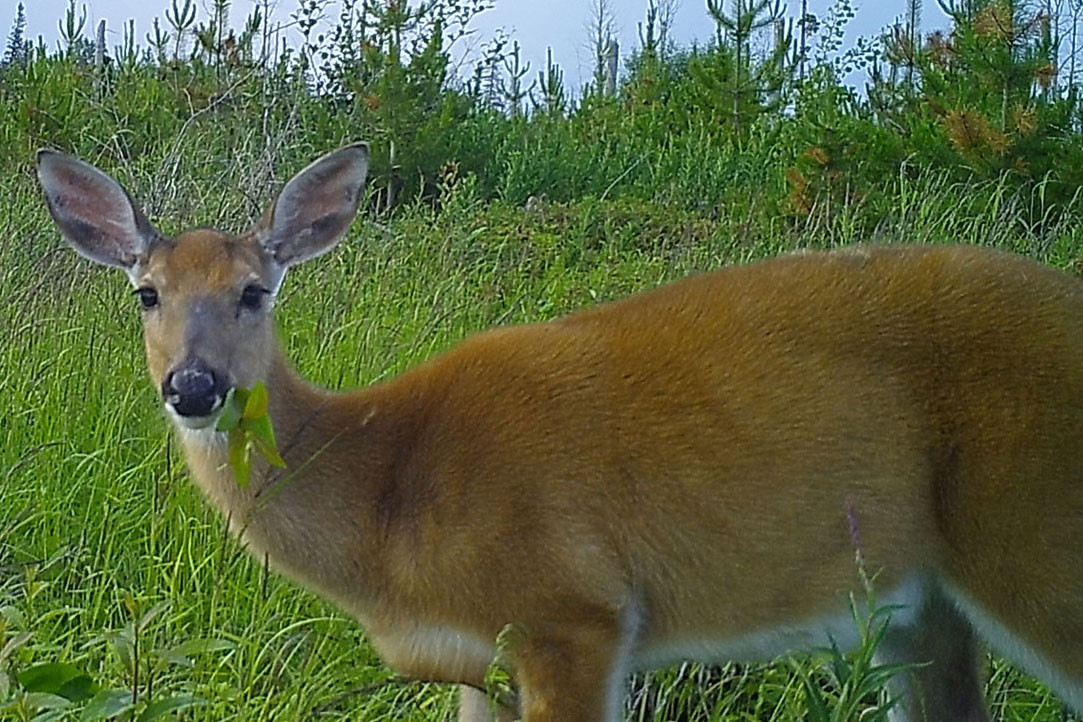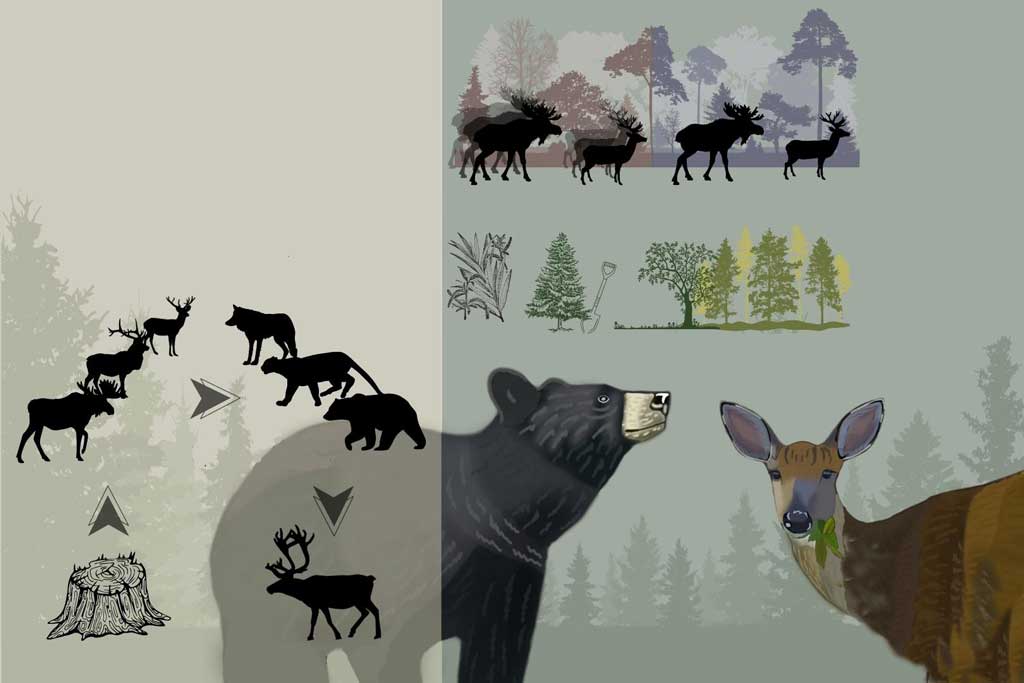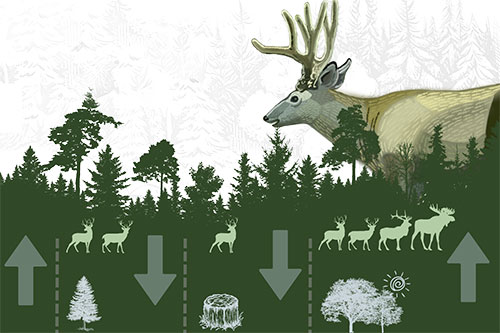We investigated the attributes of harvest blocks associated with the highest occupancy and/or co-occurrence of ungulates and predators, with the goal of providing practical information for best forest management practices to limit the distribution and overlap of ungulates and shared predators in managed forests within caribou ranges.
Key Findings
- Occupancy of deer and moose in harvest blocks was higher in summer than in winter.
- Occupancy of deer, elk, moose, and bears was linked to specific forage species (e.g., willow, fireweed, rose) and silviculture practices (e.g., planting) applied in harvest blocks as well as to increased deciduous forest and forest age in the surrounding area.
- Black bear and grizzly bear occupancy was higher in harvest blocks where white-tailed deer and mule deer were present, and bear-deer co-occurrence was influenced by site-specific silviculture practices and surrounding anthropogenic disturbance.
This is a summary of a recent paper by Tracy McKay and Dr. Laura Finnegan.












